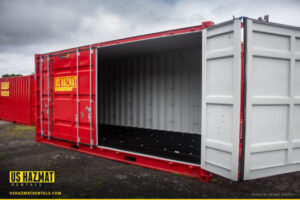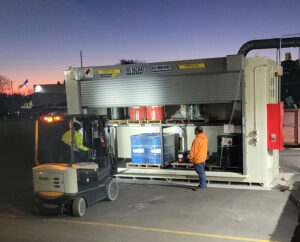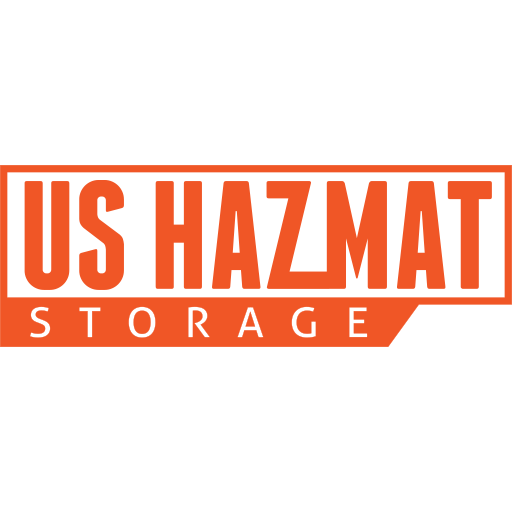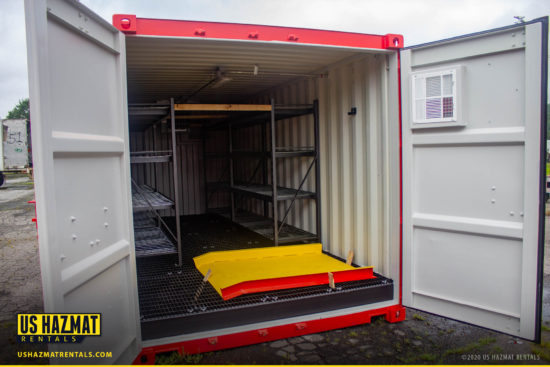Avoiding OSHA violations should be a top priority for manufacturers. Non-compliant chemical storage jeopardizes worker safety and operations. Thousands of companies are fined annually for improper chemical storage practices. For OSHA non-compliant chemical storage, penalties can range from $16,5000 per violation for serious or other-than-serious violations to $165,514 for willful or repeated violations. Civil penalties erode the bottom line while discouraging potential clients and new employees. Unfortunately, punitive fines follow workplace accidents or employee injuries. Although OSHA will visit your operation following a reportable incident, the federal agency also conducts surprise visits nationwide. Repeated OSHA violations place operations under greater federal scrutiny while tarnishing your reputation.
No business is above regulatory oversight. OSHA gives no leeway to egregious, improper chemical storage practices. The U.S. Department of Labor recently concluded that improperly stored dangerous chemicals caused a biolab fire in Conyers, Ga. OSHA cited the company for four serious and two other-than-serious violations and proposed $61,473 in penalties. According to an OSHA press release, the chemical manufacturer has 15 business days from receipt of its citations and penalties to comply, request an informal conference with OSHA’s area director, or contest the findings before the independent Occupational Safety and Health Review Commission. Compliant chemical storage should never be a superfluous line item. Our fire-rated chemical storage locker can prevent various-sized chemical stockpiles from transforming into a towering inferno.
What is Considered a Hazardous Chemical by OSHA?
OSHA defines any chemical as a substance that causes physical harm or a health hazard. Many manufacturers and companies are woefully unaware and underprepared of the hazardous materials that populate their workplace. Industrial cleaners, degreasers, lubricants, fuels, plastic precursors, and waste meet OSHA’s hazardous classifications. Moreover, OSHA classifies dangerous chemicals into key classifications including, flammables, corrosives, explosives, radioactive materials, toxic and infectious materials, and oxidizing substances.
US Hazmat Storage Lockers Are Designed for Safe, Secure, and Compliant Storage of Hazardous Materials. Our Lockers Feature Heavy-Duty Steel Construction, Built-in Sumps for Spill Containment, and Optional Fire-Rated Protection, All While Meeting OSHA, EPA, and NFPA Standards

What are the OSHA Standards for Chemical Storage?
Dangerous chemical storers can easily follow most OSHA regulations. Federal regulators say no company should store more than 25 gallons of flammable materials outside a OSHA compliant storage area or warehouse. OSHA regulations dictate that companies maintain clean storage areas away from clutter, trip hazards, and flammable conditions. Furthermore, manufacturers must store hazardous materials six feet from hoistways and 10 feet from exterior walls. Handlers should always keep dangerous chemical containers, such as drums or totes, closed with a secured lid. Never store incompatible materials together and avoid stacking containers below eye level with a low gravity center. OSHA’s General Duty Clause (29 CFR 1910.5) requires employers maintain a work area free of hazards that can cause death or serious injury. Moreover, companies should reference NFPA 30 when handling and storing dangerous chemicals.
While OSHA doesn’t require specific temperature or humidity regulations for chemical storage, optional fire suppression, climate control, and mechanical ventilation enhance workplace safety and organization. Our chemical storage lockers provide these optional amenities to prevent product degradation. We engineer each fire-rated and non-fire-rated storage locker with a bottom-affixed secondary sump containment system. The system, which sits beneath a steel-grated floor, will safely collect dangerous chemicals during spills until safe extraction. We fabricate each hazmat warehouse to your size and specifications with optional roll-up or wide-swinging doors for quick inventorying and application during all manufacturing stages.
How Does OSHA Calculate Fines?
OSHA’s fines are based on the Consumer Price Index for All Urban Consumers. Current penalties are listed in the OSHA Memorandum Adjustments for Civil Penalties. “Section 17 of the OSH Act, as amended by the Federal Civil Penalties Inflation Adjustment Act Improvements Act of 2015, Pub. L. 114-74, § 701 (“Inflation Adjustment Act”), provides the Secretary with the statutory authority to propose civil penalties for violations,” according to OSHA’s website. Fines for improper chemical storage don’t end with federal penalties. Authorities having jurisdiction, like town and county municipalities, can also fine companies within their scope for negligent storage practices.
How to Avoid OSHA Violations?

Avoiding OSHA violations isn’t rocket science, although you need a trusted professional to guide you through the labyrinthian legal language. Our skilled and knowledgeable building advisors can provide OSHA-compliant storage solution for all-sized payloads and workflow operations. We provide various-sized flammable and non-flammable chemical storage for small and large manufacturers, warehouses, remote working locations, and municipal infrastructures. Chemical segregation of incompatible materials, centralized storage, and abiding by flammable liquid in storage cabinets secures long and short-term chemical storage. Furthermore, we offer temporary and long-term storage solutions. Our readily-available, quickly deployable chemical storage warehouses ensure continuous onsite protection.


